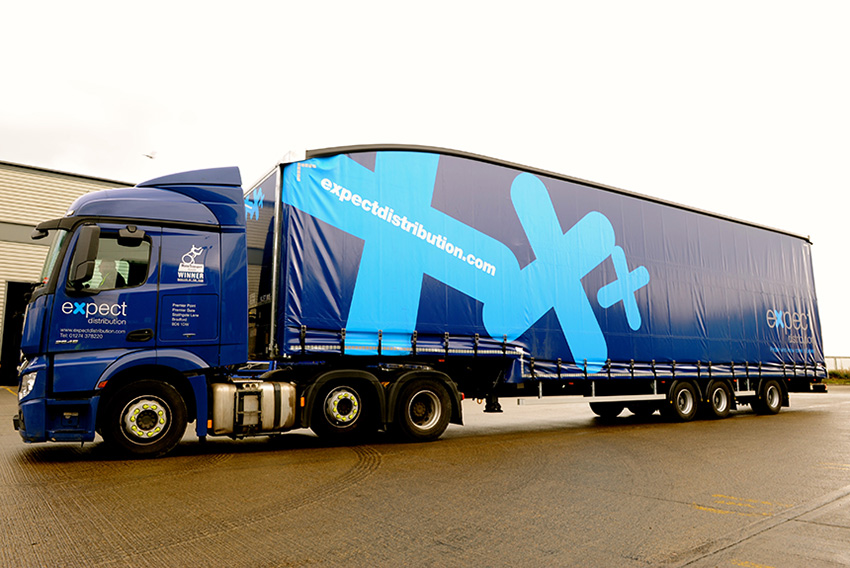In today’s fast-paced supply chain environment, timely and reliable delivery is crucial for businesses of all sizes. Palletised distribution has emerged as one of the UK's most efficient and cost-effective transport methods. By consolidating goods onto pallets, companies can simplify handling, reduce shipping costs, and ensure safe and secure delivery.
This article explores the concept of palletised distribution in the UK, how it works, its benefits, the leading networks involved, and why it remains a key logistics strategy for many sectors.
What Is Palletised Distribution?
UK Palletised Distribution refers to the process of transporting goods loaded and secured on wooden or plastic pallets. Each pallet acts as a standardized unit, making it easier to move large quantities of goods using forklifts or pallet jacks. This method streamlines the loading and unloading processes, reduces the risk of damage, and optimizes storage and transport space.
In the UK, palletised distribution is widely used across retail, manufacturing, construction, food and beverage, and pharmaceuticals. It delivers bulk or packaged products in a single, manageable unit.
How Does Palletised Distribution Work in the UK?
The UK boasts one of the most sophisticated pallet distribution networks in Europe, using a hub-and-spoke system operated by networks of logistics companies. The process typically follows these steps:
Collection
A local haulier collects the palletised goods from the customer’s premises. The goods are loaded securely onto the truck and taken to the regional depot.
Sorting and Transfer
At the depot, pallets are sorted based on their destination. They are then transported to a central hub, where they are further sorted and consolidated for delivery across the UK.
Final Delivery
From the hub, the pallets are distributed to another depot near the delivery location. A local haulier completes the last-mile delivery, ensuring the goods reach the customer on time.
This model allows for shared resources, reduced empty miles, and improved efficiency in long-distance deliveries.
Key Advantages of Palletised Distribution
Palletised distribution offers many benefits that appeal to large corporations and small to medium enterprises (SMEs). Some of the most significant advantages include:
Cost-Effective Shipping
Businesses reduce handling time and shipping costs by consolidating goods onto a single pallet. The shared network infrastructure also means lower transportation costs.
Faster Delivery Times
The hub-and-spoke model enables next-day or two-day delivery across the UK, making it ideal for time-sensitive shipments.
Reduced Risk of Damage
Pallets are designed for stability and durability. Properly secured goods to pallets are less likely to shift or become damaged during transit.
Scalable Logistics
Whether shipping one pallet or several hundred, palletised distribution is easily scalable. Networks can adapt to seasonal demand or business growth.
Enhanced Tracking and Visibility
Modern logistics systems allow customers to track their pallet shipments in real time, providing full transparency and better communication with end recipients.
Leading UK Pallet Distribution Networks
Several major pallet networks operate across the UK, offering extensive coverage and high service standards. These include:
Palletline
Founded in 1992, Palletline was the first pallet network in the UK. It operates with a cooperative model, where members are also shareholders, ensuring high service quality.
Palletways
One of Europe’s largest pallet networks, Palletways offers fast and flexible delivery options, including premium timed deliveries and international services.
Pall-Ex
Known for its commitment to technology and customer service, Pall-Ex provides reliable pallet transport and has a growing presence across Europe.
Fortec Distribution Network
Fortec focuses on premium logistics services and operates with a strong network of independent hauliers, providing nationwide and international reach.
These networks connect dozens of independent hauliers, enabling widespread coverage, reliability, and local expertise.
Pallet Sizes and Types in UK Distribution
The standard pallet size used in the UK is the UK Standard Pallet, which measures 1,200mm x 1,000mm. There are typically three types of pallet deliveries:
- Quarter Pallet: For smaller shipments (up to 250kg)
- Half Pallet: Medium shipments (up to 500kg)
- Full Pallet: For larger shipments (up to 1,000kg or more)
This standardization allows for easy quoting, load planning, and efficient transportation.
Technology’s Role in Pallet Distribution
The role of technology in palletised distribution has grown significantly in recent years. Logistics providers now use:
- Barcode scanning for accurate sorting and tracking
- Online portals for booking and managing shipments
- GPS tracking to monitor vehicle locations in real time
- Electronic Proof of Delivery (ePOD) systems to confirm receipt instantly
These tools improve accuracy, transparency, and customer satisfaction, making pallet distribution more efficient than ever.
Sustainability and Environmental Benefits
Palletised distribution networks are increasingly adopting green logistics practices. By using shared transport resources, they reduce the number of vehicles on the road and minimize fuel consumption. Many providers now invest in low-emission vehicles, route optimization, and recyclable packaging materials, helping clients meet their environmental goals.
Industries That Rely on Palletised Distribution
Many industries depend on pallet distribution to ensure their supply chains run smoothly:
- Retailers use it to restock stores with products quickly.
- Manufacturers receive and dispatch raw materials and finished goods.
- Food producers rely on temperature-controlled pallet shipments.
- E-commerce businesses use pallet networks for bulk warehouse deliveries.
The system's flexibility makes it suitable for a diverse range of goods, from electronics and clothing to construction materials and medical supplies.
Conclusion
UK palletised distribution continues to evolve, driven by customer demand, digital innovation, and sustainability. As businesses seek more efficient and reliable ways to move goods, pallet networks offer a robust solution that balances cost, speed, and safety.
Partnering with a trusted pallet network is a smart and strategic move for companies aiming to streamline their logistics operations while maintaining service excellence. Whether you're a local SME or a multinational brand, palletised distribution can help enhance operational efficiency and deliver real value across your supply chain.





Comments